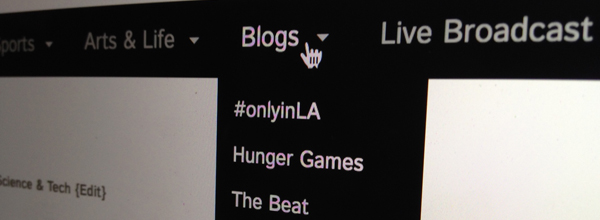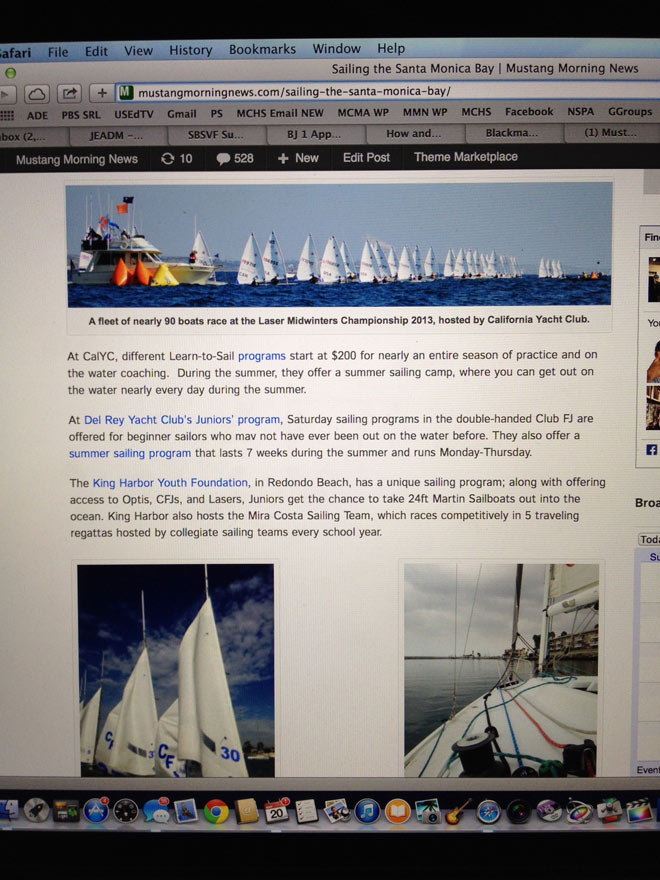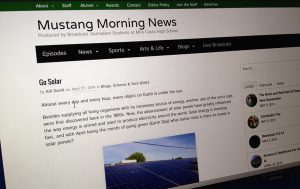How and Why to Blog for Student Publications

Blogging can be an important part of your publication’s workflow. Depending on how you use them, you can expand news coverage, provide a creative outlet for staff members, and help build your audience.
For a traditional print publication, this online story might be the digital equivalent of a column, with each student assigned to a theme, or have reporters rotate writing for each column.
Still others might use the blog as a “behind the scenes” look at your staff, and a way for students to reflect on their work.
In my broadcast program, I use the blog for multiple reasons: as a way for students to practice their writing; as an alternative venue to publish news that might not be appropriate for a broadcast video story or social media; a way for students to choose their own story and cover a topic that they’re passionate about; an incubator for ideas that might develop into longer broadcast stories or series. I also use it as a summer writing assignment to keep the staff writing and reporting.
During each three-week news cycle, half of the staff must complete a blog, so everyone writes at least one blog every six weeks (more can be completed for extra credit). The topics are their choice, but usually fit within a spectrum of topics generated by the staff: The Beat (music), Inspector Gadget (technology), Hunger Games (food and restaurant reviews), #onlyinLA (it is the west coast, you know) and Cheap Dates (inexpensive things to do and places to go).
Students write 200-300 words, upload a few images and links, and post on our WordPress site the same way we post all of our other content. The web producer checks for completion and technical issues.
Some of our stories with the most views are blogs, and they can be the most fun to read.
The online story isn’t just a frivolous side project, but a legitimate form of news coverage. It’s also an important skill that our students need in the professional world. Because of their blogging experience and familiarity with WordPress, one of my students earned an internship writing for a local website; another was hired to be an online video producer at UC Berkeley’s Daily Californian website her freshman year.

For publications without a website, there are many free services that you can use for online stories: Blogger, WordPress.com, Wix, Weebly, Tumblr and Google Sites.
However you choose to use blogs with your staff, here are some tips and considerations when developing your blog protocols.
- Determine what your curricular and journalistic purpose is for blogging. This will help set expectations for quality and content.
- Consider how is a blog different from your regular journalism articles/stories and how they fit into your overall coverage/content.
- What volume/frequency of blogging do you expect of your staff? Be realistic about what they can produce given the rest of their workload.
- Be sure to spread out story posts so they don’t all go live on one day/class period.
- How will editors keep track of blog assignments (evaluation of style, content, technical elements, etc.)?
- Develop a rubric for content expectations and grading
- How will your audience find these online stories that may not be in your printed paper or aired on your broadcast show?
How does your publication use blogging? Share your ideas and links to student blogs in the comments area below.





I have taught Video Production and English at Ridgecrest Intermediate School in Palos Verdes for fifteen years and have found information from this author to be very informative and useful. Thanks again, Mr. Hernandez. Well done.
Thanks for the kind words, John! Happy to help.
Pingback:Advisers: Staff should start digital portfolios NOW | JEADigitalMedia.org